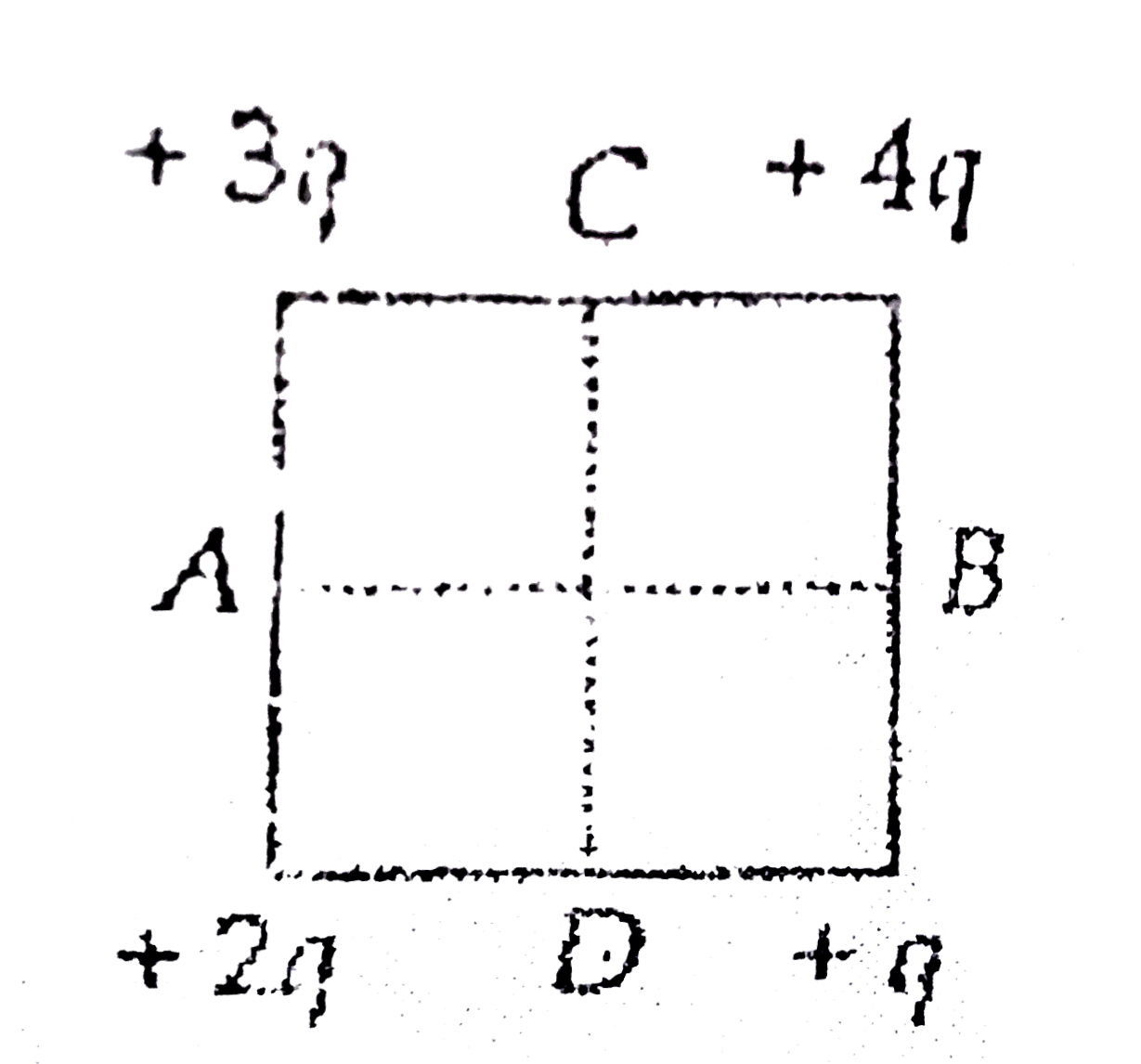Four charges of same magnitude q are placed at four corners of a square of side a . The value electric potential at the centre of the square will be (where k = 14πε0 )
4kqa
4√2kqa
4kq√2a
kqa√2
The correct Answer is:B
To find the electric potential at the center of a square with four charges of the same magnitude q placed at its corners, we can follow these steps:
1. Understanding the Setup:
- We have a square with side length a.
- There are four charges, each of magnitude q, located at the corners of the square.
2. Finding the Distance from the Charges to the Center:
- The center of the square is equidistant from all four corners.
- The distance r from any corner of the square to the center can be calculated using the Pythagorean theorem. Since the center divides the square into two equal halves, the distance is given by:
r=a√2
3. Calculating the Electric Potential Due to One Charge:
- The electric potential V due to a single point charge q at a distance r is given by the formula:
V=kqr
- Substituting the value of r:
V=kqa√2=kq√2a
4. Calculating the Total Electric Potential at the Center:
- Since the potential is a scalar quantity, the total potential Vtotal at the center due to all four charges is simply the sum of the potentials due to each charge:
Vtotal=4×V=4(kq√2a)
- Therefore, we have:
Vtotal=4kq√2a
Final Answer:
The electric potential at the center of the square is:
V=4kq√2a
- We have a square with side length a.
- There are four charges, each of magnitude q, located at the corners of the square.
- The center of the square is equidistant from all four corners.
- The distance r from any corner of the square to the center can be calculated using the Pythagorean theorem. Since the center divides the square into two equal halves, the distance is given by:
r=a√2
- The electric potential V due to a single point charge q at a distance r is given by the formula:
V=kqr
- Substituting the value of r:
V=kqa√2=kq√2a
- Since the potential is a scalar quantity, the total potential Vtotal at the center due to all four charges is simply the sum of the potentials due to each charge:
Vtotal=4×V=4(kq√2a)
- Therefore, we have:
Vtotal=4kq√2a
The electric potential at the center of the square is:
V=4kq√2a
Topper's Solved these Questions
- ELECTROSTATIC POTENTIAL AND CAPACITANCE BOOK - AAKASH INSTITUTECHAPTER - ELECTROSTATIC POTENTIAL AND CAPACITANCE EXERCISE - ASSIGNMENT SECTION - B
38 Videos
- ELECTROSTATIC POTENTIAL AND CAPACITANCE BOOK - AAKASH INSTITUTECHAPTER - ELECTROSTATIC POTENTIAL AND CAPACITANCE EXERCISE - ASSIGNMENT SECTION - C
53 Videos
- ELECTROSTATIC POTENTIAL AND CAPACITANCE BOOK - AAKASH INSTITUTECHAPTER - ELECTROSTATIC POTENTIAL AND CAPACITANCE EXERCISE - EXERCISE
20 Videos
- ELECTROMAGNETIC WAVESBOOK - AAKASH INSTITUTECHAPTER - ELECTROMAGNETIC WAVESEXERCISE - ASSIGNMENT SECTION - D Assertion-Reason Type Questions
25 Videos
- GRAVITATION BOOK - AAKASH INSTITUTECHAPTER - GRAVITATION EXERCISE - ASSIGNMENT SECTION - D (ASSERTION-REASON TYPE QUESTIONS)
16 Videos
Similar Questions
Knowledge Check
Four charges of same magnitude q are placed at four corners of a square of side a . The value electric potential at the centre of the square will be (where k = 14πε0 )
A4kqaB4√2kqaC4kq√2aDkqa√2A charge 'Q' is placed at each corner of a cube of side 'a'. The potential at the centre of the cube is
A8Qπε0aB4Q4πε0aC4Q√3πε0aD2Qπε0aEqual charges q are placed at the three corners B, C, D of a square ABCD of side 'a'. The ratio of potential at A to centre O is
A2√2+13√2B2+√26C2√2+16D2√2+13
Four charges +q,+2q,+3q and +4q are placed at the four corners ABCD of a square of side a. Calculate the field and potential at the centre of the square.
View SolutionFour charges of same magnitude and same sign are placed at the corners of a square, of each side0⋅1m. What is electric field intensity at the center of the square?
View SolutionFour charges are arranged at the corners of a square as shown in the figure. The direction of electric field at the centre of the square is along

View SolutionElectric charges of +10μC,+5μC,−3μCand+8μC are placed at the corners of a square of side √2 m, the potential at the centre of the square is
View SolutionEqual charges q are placed at the three corners B, C, D of a square ABCD of side a. The potential at A is
View Solution
